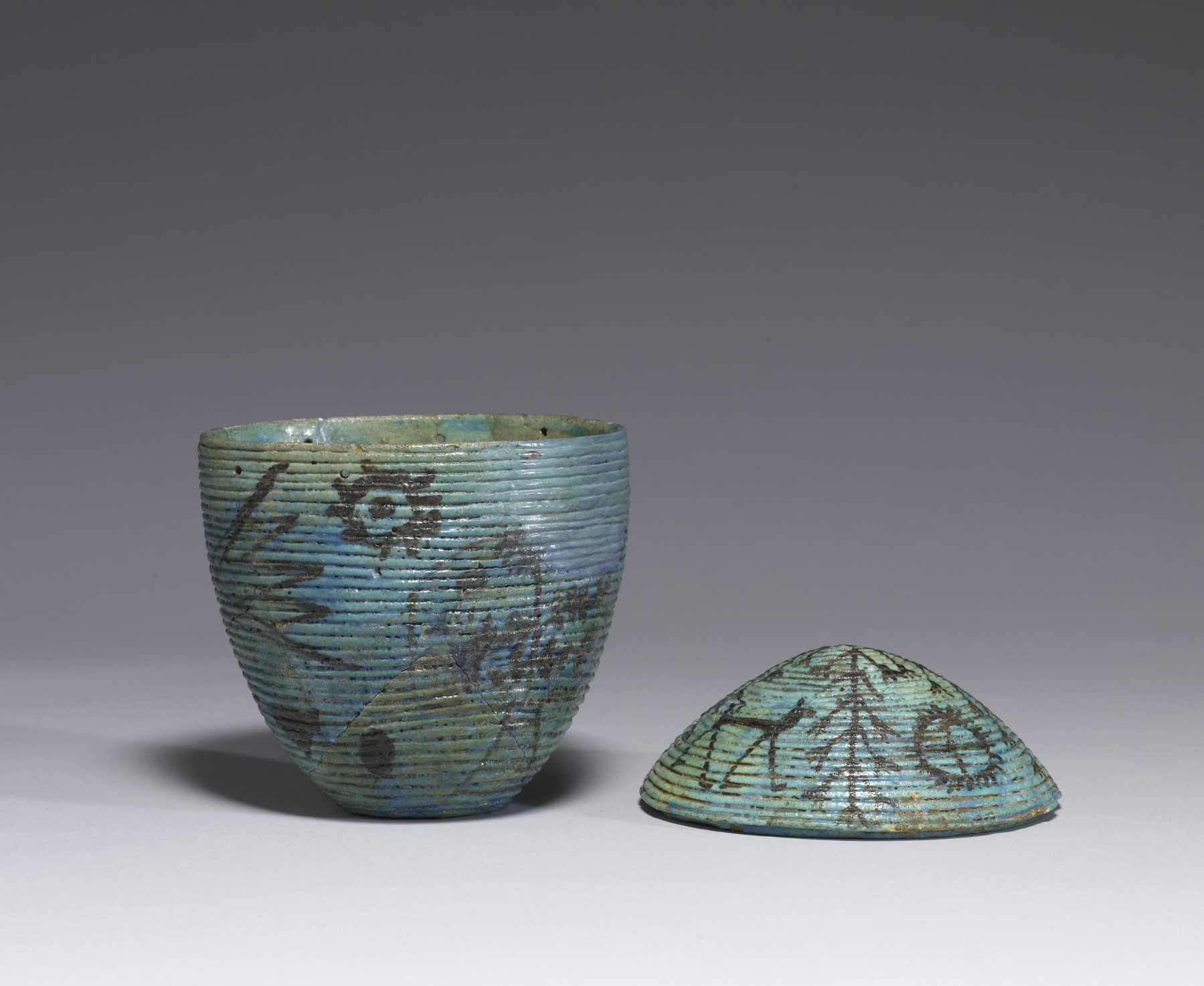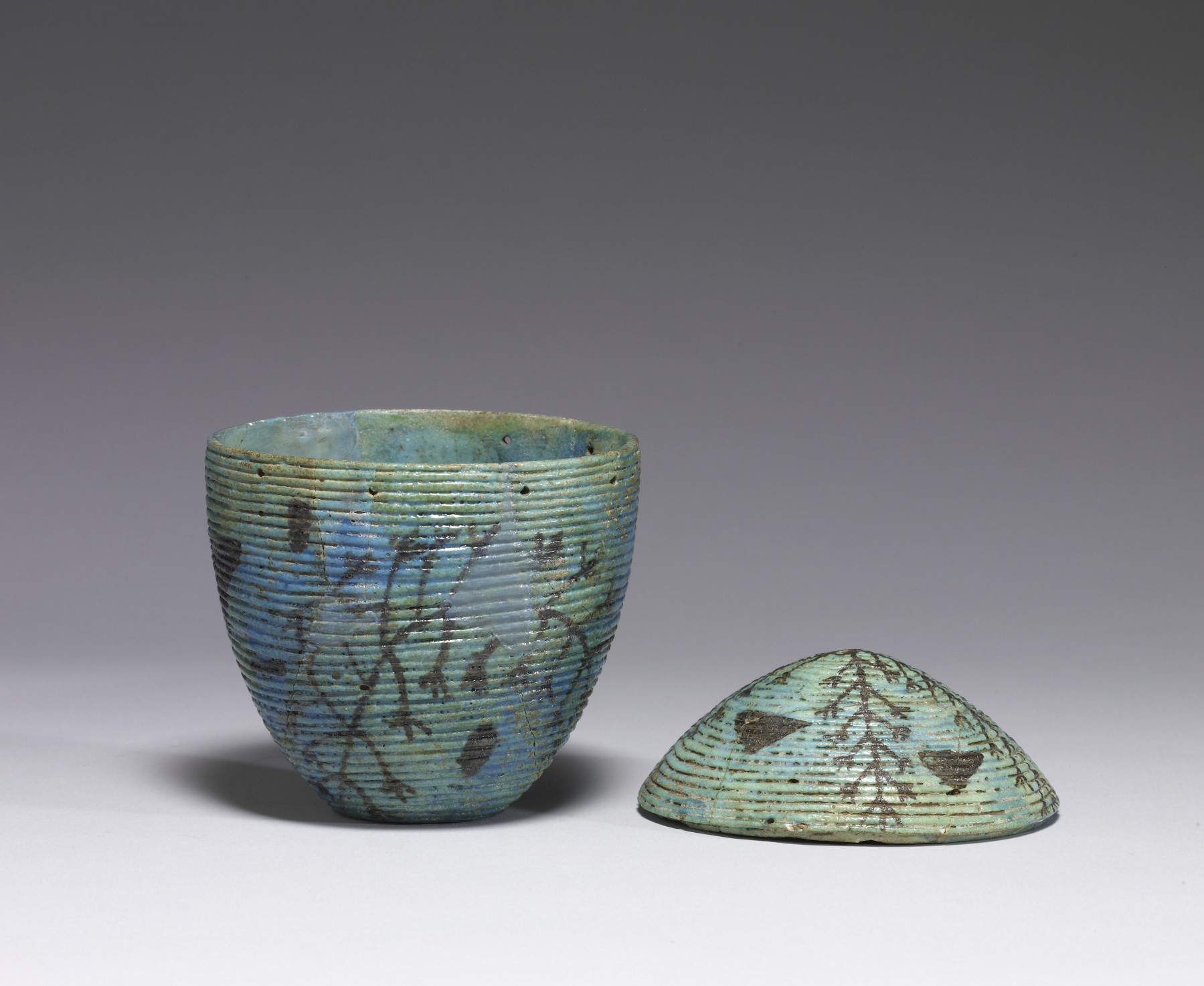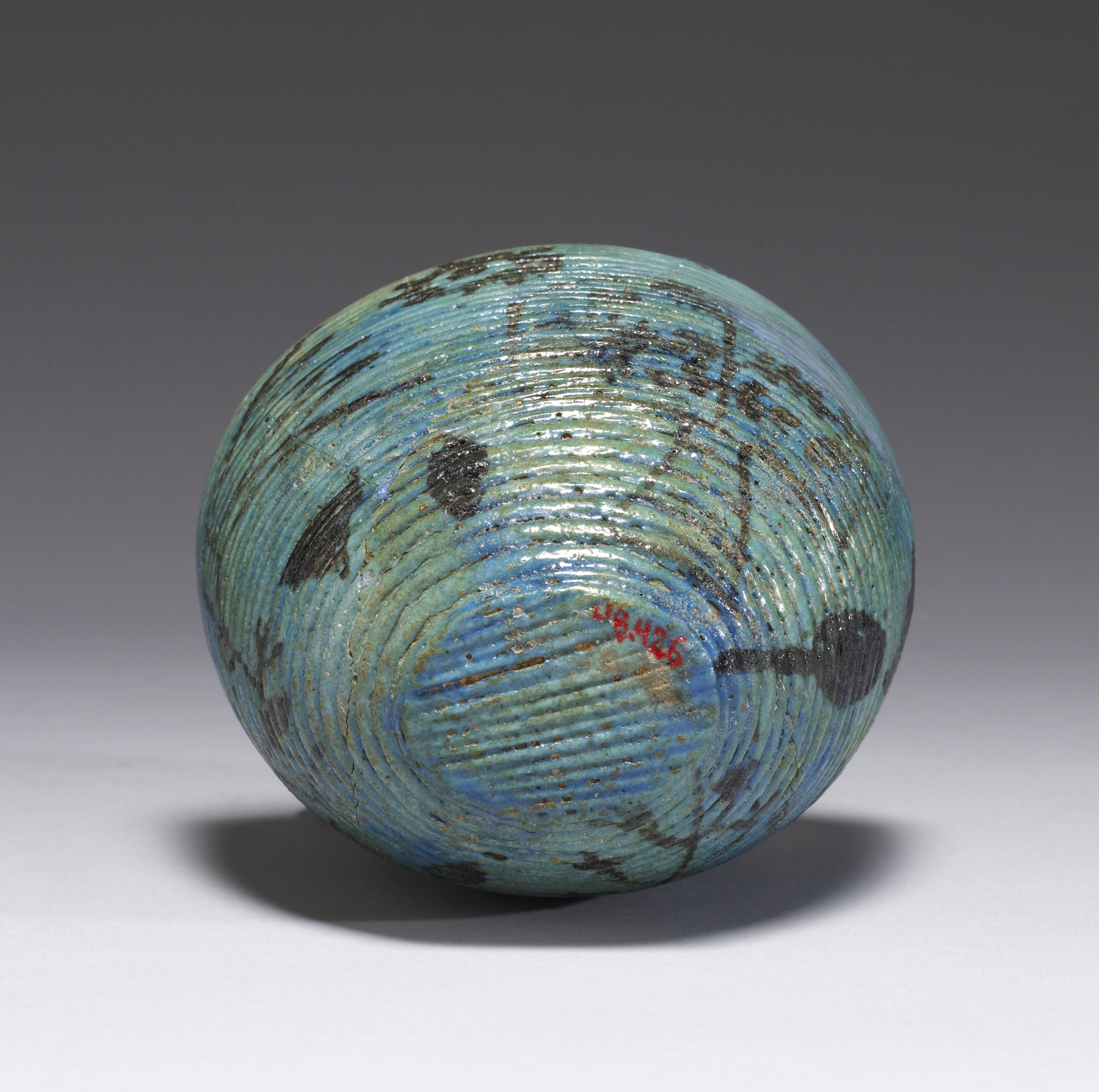Vessel with Lid
(Ancient Egypt and Nubia )
The finest of three lidded faience baskets to survive from the New Kingdom, this example shows how the artisan tried to imitate actual fiber baskets. Even the base of the vessel imitates coiled fiber. The vessel and its lid were held together by decoratively laced string.
Provenance
Provenance (from the French provenir, 'to come from/forth') is the chronology of the ownership, custody, or location of a historical object. Learn more about provenance at the Walters.
Rev. William MacGregor, Tamworth, Staffordshire, by 1898; Sale, Sotheby, Wilkinson & Hodge, London, June 26-29 and July 4-6, 1922, no. 270; Dikran Kelekian, Paris and New York, 1922, by purchase; Henry Walters, Baltimore, 1923, by purchase; Walters Art Museum, 1931, by bequest.
Exhibitions
| 1998-1999 | Gifts of the Nile: Ancient Egypian Faience. The Cleveland Museum of Art, Cleveland; Museum of Art, Rhode Island School of Design, Providence; Kimbell Art Museum, Fort Worth. |
| 1982-1983 | Egypt's Golden Age: The Art of Living in the New Kingdom (1558-1085 B.C.). Museum of Fine Arts, Boston, Boston; Houston Museum of Natural Science, Houston; The Walters Art Gallery, Baltimore. |
Conservation
| Date | Description | Narrative |
|---|---|---|
| 1/31/1997 | Examination | survey |
Geographies
Egypt (Tuna el-Gebel) (Place of Origin)
Measurements
7 1/2 x 4 3/8 x 3 13/16 in. (19 x 11.1 x 9.8 cm)
Credit Line
Acquired by Henry Walters, 1923
Location in Museum
Accession Number
In libraries, galleries, museums, and archives, an accession number is a unique identifier assigned to each object in the collection.
In libraries, galleries, museums, and archives, an accession number is a unique identifier assigned to each object in the collection.
48.426








